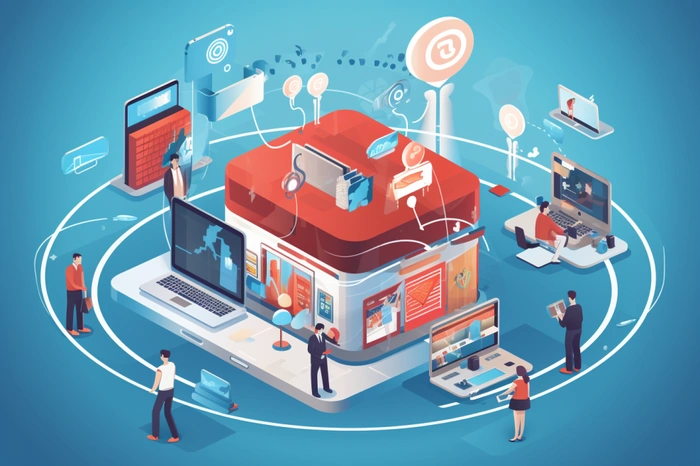In the ever-evolving world of artificial intelligence and automation, OpenAI’s models like ChatGPT and Make Automation are making waves. This beginner-friendly guide, brought to life by Webcafe AI, offers a comprehensive tutorial on how to harness the power of these tools to automate a variety of tasks.
The guide is designed to cater to those who are new to AI automation, covering everything from setting up the environment to coding a simple chatbot. It provides hands-on experience and expert insights, making it an invaluable resource for beginners.
The Make platform, as demonstrated in the video, is a cost-effective alternative to other automation platforms like Zapier and Pipedream. Despite its complexity due to limited native integrations, Make supports around 1000 apps natively, and users can integrate other apps using API documentation. This flexibility, coupled with its unique feature of offering a free plan with access to teams, sets Make apart from its competitors.
The ability to streamline and automate tasks has become a sought-after commodity. This is where AI automation platforms step in. These platforms leverage artificial intelligence to help users seamlessly integrate different applications and set up automated workflows. Let’s delve into how AI automation platforms work and the benefits they can offer to both individuals and businesses.
One thing to remember is that Makes extensive use of webhooks is due to its limited native integrations is a key feature when compared to other more established automation services such as Zapier. Make users can create custom apps, add devices to their Make account, and store data, although the free plan does have storage limitations. Make also allows users to create multiple organizations, making it a cost-effective solution for teams. Users also need to be aware that they must manually save their work on Make, as it does not automatically save like other platforms.
What are Webhooks?
In its simplest terms webhooks are a way for one system or application to provide real-time information to another system or application, without the second system having to ask for it. They allow for applications to communicate with each other automatically.
AI Automation Using ChatGPT and Make
Other articles on the subject of AI automation using ChatGPT and Zapier
The tutorial kindly created by Webcafe AI provides a step-by-step guide on how to connect OpenAI and Gmail to Make, and how to create a scenario (workflow) on the platform. Examples include checking incoming emails, using AI to determine if the email is from a potential lead, and then creating a draft email response. This process is facilitated by the platform’s use of filters and routers to control the flow of the scenario, and OpenAI’s GPT-3 model to analyze the emails and generate responses.
Make also offers flow control tools and text parsers for more advanced workflows. The tutorial emphasizes the importance of renaming data points for clarity when building complex scenarios. Make counts each run of a scenario as an operation and also tracks data transfer. Users can clone scenarios, move them to different folders, and view their history, including past runs and incomplete executions.
AI Automation a Beginner’s Guide
At its core, AI automation refers to the use of artificial intelligence to execute tasks without human intervention. This encompasses a wide range of activities, from simple data transfers between apps to complex processes that involve decision-making based on data analysis.
How Do AI Automation Platforms Work?
- Integration of Apps and Services: These platforms connect various digital tools, apps, and services. This integration allows data to flow seamlessly between them.
- Setting Up Triggers and Actions: Users define “triggers” – specific events or conditions in one app – and the corresponding “actions” in another app. For example, receiving an email (trigger) could lead to the addition of a new contact in a CRM (action).
- AI-Powered Decisions: Advanced platforms can make decisions based on data analysis. For instance, if a certain keyword appears in a social media post, the system might automatically classify and route it to the relevant department.
Benefits of AI Automation
- Efficiency and Productivity: Automating repetitive tasks frees up time, allowing individuals and teams to focus on more strategic and creative endeavors.
- Error Reduction: Automated workflows reduce the chance of human errors, ensuring that tasks are executed consistently and accurately.
- Data Utilization: These platforms can gather, analyze, and act upon vast amounts of data in real-time, providing insights and actions that would be challenging for humans to achieve manually.
- Scalability: As businesses grow, the volume of tasks can increase exponentially. Automation platforms can handle these increased demands without the need for proportional increases in human resources.
- Customization: Users can tailor their automation workflows to fit their unique needs, ensuring that the platform serves their specific objectives.
Getting Started with AI Automation
- Identify Repetitive Tasks: Begin by listing tasks that are repetitive and time-consuming. These are prime candidates for automation.
- Choose the Right Platform: Look for a platform that supports the apps and services you use. It should also be user-friendly, especially if you’re new to automation.
- Start Small: Initially, set up simple automations to get a feel for the process. As you become more comfortable, you can create more complex workflows.
- Monitor and Adjust: Regularly review your automated workflows. This ensures they remain relevant and effective, and allows you to make adjustments based on changing needs.
How Do Webhooks Work?
- Event Trigger: Webhooks are typically triggered by some event in the source system. For example, this could be a new e-commerce order being placed, a new user signing up, or a change in a database entry.
- Payload Creation: Once the event is triggered, the source system will package up relevant information (often in the form of a JSON or XML document) about the event. This package is known as the “payload.”
- Payload Delivery: The source system then sends this payload to a pre-defined URL – the webhook URL – using an HTTP POST request.
- Destination Processing: The receiving system (which has the webhook URL) will then process this payload. This could involve updating its own database, sending an email, or any other action.
- Response: After processing, the receiving system usually sends back a response to acknowledge the receipt and processing of the payload. This could be a simple HTTP 200 OK status.
Why are Webhooks Useful?
- Real-time Communication: Webhooks provide real-time data transfer, making them efficient for events that require immediate attention.
- Reduced Server Load: Without webhooks, systems would have to poll each other frequently to check for updates, leading to unnecessary server load. Webhooks eliminate the need for constant polling.
- Flexibility: They allow for easy integration between different platforms and services, even if they were not originally designed to work together.
- Customization: Webhooks can be tailored to transmit specific data or initiate specific actions, allowing for a high degree of customization in inter-application communication.
Precautions with Webhooks:
- Security: Always ensure that the data being sent and received is secure. This might involve using HTTPS for transmission and validating payloads before processing them.
- Error Handling: Ensure that your system can handle failures gracefully, like in cases where the receiving endpoint is down or if there’s an error in processing the payload.
- Payload Verification: It’s essential to verify that the incoming data is from a trusted source. This can often be done using secret tokens or digital signatures.
This beginner’s guide to AI automation using ChatGPT and Make is a comprehensive resource that provides a solid foundation for those new to the field. It offers a hands-on approach, expert insights, and a detailed walkthrough of the Make platform, making it an invaluable tool for beginners.
Filed Under: Guides, Top News
Latest Aboutworldnews Deals
Disclosure: Some of our articles include affiliate links. If you buy something through one of these links, Aboutworldnews may earn an affiliate commission. Learn about our Disclosure Policy.







